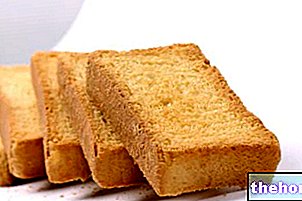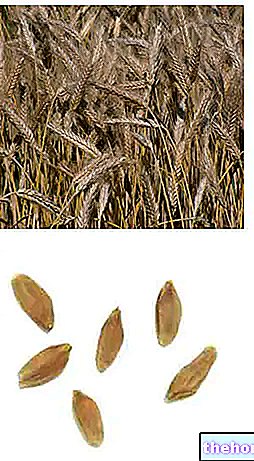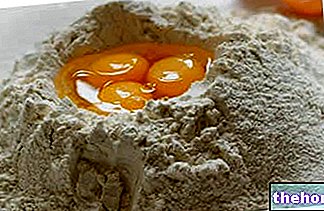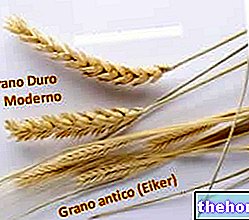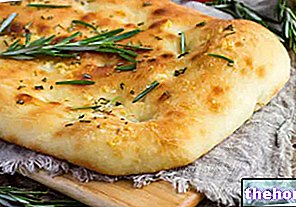Stale bread is old bread, or rather, bread that is no longer fresh and hardened. More precisely, stale bread has a crust that is NO longer crunchy and apparently soft (by absorption of the internal water), while the crumb is hard, crumbly to the touch.

However, several experiments carried out on whole loaves transformed into stale bread have shown a much lower level of dehydration than was hoped for; in this regard, there is reason to believe that the loss of water from stale bread does not contribute at all to the hardening process of fresh bread.
The first test was done by Jean Baptiste Boussingault in the mid 19th century:
'Taking into consideration a round bread with a diameter of 33cm, 14cm thick and a weight of 3.760kg (measured at the time of taking out of the oven), a thermometer was placed inside it which penetrated 7cm from the surface; this revealed a core temperature of just 97 ° C (despite being baked in the oven at 250-300 ° C).
Placing the bread in a chamber at 19 ° C for 12 hours, at the core, the bread has kept a temperature of 25 ° C and, only at the end of 24 hours, has it reached equilibrium with the external temperature.
At this point, noticing an already partial transformation into stale bread, a second weighing of the food was carried out, measuring 3.730kg; the dehydration was only 30g.
On the 6th day, with totally stale bread, a third weighing was carried out which detected 3.690kg, highlighting a further dehydration of 40g which, added to the first, led to a total water loss of 70g on an initial bread. of 3760g (1.86%).
Well, putting the 3.690 kg stale bread in the oven for one "hour (at high temperatures, reaching 70 ° C at the core), a" further loss of water of 120g of water "occurred in concomitance with the total restoration of the freshness of bread.
In a second experiment, the scientist sealed stale bread crumbs in an airtight tin (to avoid excessive dehydration) and noticed that by heating and cooling it an indefinite number of times, the crumb continually restored and lost its elastic characteristics.'.
In conclusion, the bread becomes stale and returns to its original consistency based on the temperature; by putting the stale WHOLE bread in the oven and subjecting it to heat it regains its original consistency, as well as leaving it at room temperature it undergoes a hardening process. All this can be repeated several times without significantly changing the hydration rate. Obviously, if "pieces" or "slices" of bread were taken into consideration, the result would be, at least in part, different; the bread would not have the insulating outer coating of the crust and the dehydration could be more incisive (except for the experiment carried out in hermetic sealing).
In practice, it is not for the quantity of water that stale bread differs from fresh bread, but for a "reversible molecular alteration of the starch (of colloidal nature) which: begins during cooling, develops later, and persists until at that the temperature does not exceed a certain limit (at least 70 ° C). It is however likely that this structural evolution may also occur during the first digestion, altering the degradation of the complex carbohydrate and making it more or less available.
See also: resistant starch
Stale Bread Video Recipe
How many times has it happened to you to buy some bread and to have a few pieces left over? It happens often to me, but I always find a way to recover it: I can grate it, soften it in milk to prepare fish balls or dumplings or, again, dip it in vinegar to prepare the green sauce! Today, however, with the leftover stale bread I will prepare delicious super-fast pizzas for you!
Very Fast Pizzas of Bread
Problems with playing the video? Reload the video from youtube.
- Go to the Video Page
- Go to the Video Recipes Section
- Watch the video on youtube
Other recipes based on stale bread are those of dumplings and stale bread pizza
Other Cereals and Derivatives Amaranth Wheat starch Corn starch Rice starch Modified starch Oat starch Bulgur Whole grains Corn Flakes Crackers Oat bran Bran Cus cus Amaranth flour Oat flour Buratto flour Spelled flour Buckwheat flour Corn flour Corn flour Millet Barley flour Quinoa flour Small spelled flour (Enkir) Rice flour Rye flour Sorghum flour Flour and semolina Whole wheat flour Manitoba flour Pizza flour Spelled Rusks Focaccia Nuts Wheat or wheat Wheat germ Burnt wheat Buckwheat Breadsticks Oat milk Rice milk Corn Maizena Malt Millet Muesli Barley Stale bread Unleavened bread and Pita Bread Carasau bread Egg pasta Rice pasta Wholemeal pasta Piadina Small spelled Pizza Pop corn Baked goods Quinoa Rice Basmati rice Converted rice White rice Rice Wholemeal Parboiled Rice Puffed Rice Venus Rice Rye and Horned Rye Semolina Semolina Sorghum Spaghetti Spelled Teff Tigelle Triticale OTHER ARTICLES CEREALS AND DERIVATIVES Categories Food Alcoholics Meat Cereals and derivatives Sweeteners Sweets Offal Fruit Dried fruit Milk and derivatives Legumes Oils and fats Fish and fishery products Salami Spices Vegetables Health recipes Appetizers Bread, Pizza and Brioche First courses Second courses Vegetables and Salads Sweets and Desserts Ice creams and sorbets Syrups, liqueurs and grappas Basic Preparations ---- In the Kitchen with Leftovers Carnival Recipes Christmas Recipes Dietary Recipes Light Recipes Woman's Day, Mother's Day, Dad's Day Functional Recipes International Recipes Easter Recipes Recipes for Celiacs Recipes for Diabetics Holiday Recipes Valentine's Day Recipes Vegetarian Recipes Protein Recipes Regional Recipes Vegan Recipes

